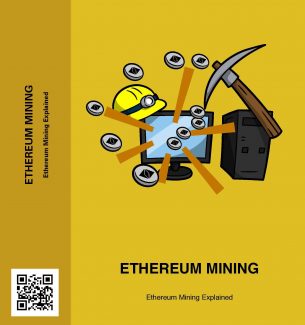
 License Type: Personal Use
License Type: Personal Use  File Type: ZIP
File Type: ZIP
 SKU: 61735
SKU: 61735  Shipping: Online Download
Shipping: Online Download
Sample Content Preview
Introduction
Ethereum is a public, peer-to-peer network or blockchain that makes use of its own digital currency known as Ether. It aims to function simultaneously as a decentralized internet and a decentralized app store. It bears a close similarity to Bitcoin and was created in 2014 by a 19-yearold cryptocurrency researcher and programmer from Toronto named Vitalik Buterin.
Buterin was originally inspired to create Ethereum while he was still involved with Bitcoin Magazine. He sought to expand the capabilities of Bitcoin by making it more than just a store of wealth. And so, in late 2013, he released a white paper proposing a new platform that will be able to create smart contract (scripting) functionality supporting a range of applications for developers. This platform is what we know today as Ethereum.
If you have been considering mining a type of cryptocurrency, you very well may want to consider Ethereum. In this eBook, you’ll learn all about what Ethereum mining is, how to determine if it’s right for you, and how to get started.
What is Ethereum Mining
After the release of his whitepaper which described the technical design of Ethereum and the protocol, Buterin immediately started garnering the support of other developers. Before long, Co-founders Dr. Gavin Wood and Joseph Lubin came on board. Together, they launched a crowdfunding campaign which saw participants buying Ether or Ethereum tokens in the form of shares in the project.
With their combined efforts and massive support from numerous participants, Buterin and his team were able to raise more than $18 million from the crowdfunding campaign. Their success didn’t go unnoticed; within a short while, several other developers joined in to grab a piece of the action.
Today, the smart contract platform which Ethereum provides has grown into an ecosystem of hundreds of developers. Tech giants including the likes of Microsoft and IBM, who have pitched their tents with Ethereum and are working closely with developers to ensure that the system remains sustainable.
This process of ensuring the sustainability of the network thus requires the continued mining of Ethereum. Mining is the major factor responsible for making decentralized record-keeping a possibility.
The mining process of Ethereum is almost exactly the same as Bitcoin’s – it is an open-source public software platform that focuses on Blockchain technology and they both use Proof of Work (PoW). For every block of transactions, miners repeatedly and rapidly solve a cryptographic puzzle with the use of a computer until one of them wins Ether.
It is hard for miners to cheat at this game. This is because the system is based on an elaborate puzzle-solving method known as ‘proof-of-work.’ Hence, it is practically impossible for any miner to fake this work and generate an accurate puzzle answer out of thin air.
Normally, a block is found every 12-15 seconds. If the miner begins to solve the block, either more slowly or faster than the allotted time, the algorithm will automatically modify the difficulty of the puzzle to maintain the standard 12-second solution time.
Ethereum uses a proof-of-work algorithm specifically known as ’ethash.’ In a nutshell, miners run the block’s unique header metadata through a hash function. After receiving feedback in the form of a fixed-length of random numbers and letters in a scrambled string, the ‘nonce value’ changes, impacting on the resulting hash value.
Ethereum tokens are thus created by generating Ethers at a rate of 5 ethers per mined block. Ether is simply a unique piece of code that can be used to make payments for the computational resources that are usually required for operating an application or program.
Ether can be transferred from one account to another and can be used to compensate miners for computations performed. However, instead of simply running as a digital currency or payment, Ether seeks to take it a step further by providing “fuel” for the decentralized apps on the network.
Because of this, developers from all over the world are now able to build and run decentralized applications on the Ethereum platform. This same platform has also provided the main gateway for new tech-startups to launch successfully from it.
Why do people mine Ethereum?
As the trend of Ethereum mining gathers momentum, more and more people have decided to join the bandwagon of miners and claim their stake in the cryptocurrency boom for Ethereum. In 2017, the value of the Ethereum (ETH) currency increased over 13,000%, and it is still climbing.
Just as BTC can be easily sold for cash, mining Ethereum is a good way to earn some cash for yourself. You can sell your ETH directly on major exchanges like Bitfinex, Kraken, Coinbase, BTC-e, and Gemini. Asides from its potentially astronomical profit generating capabilities, there are several other reasons why people mine Ethereum.
Also, and as earlier pointed out, Ethereum was introduced to improve upon Bitcoin by offering smart contract features. That reason, however, is just a tip of the iceberg. There is a very high likelihood of Ethereum switching from its current Proof of Work mining phase to a Proof of Stake. Therefore, mining ETH and building on your coins now can give you interest on your holdings in the event Ethereum switches to a Proof of Stake. Mining is like the glue that holds Ethereum's decentralized app store together, making sure that it adapts to each change effected to any of the applications (dapps) running on the network. Mining works to verify and validate transactions with the Ethereum network.
One other major reason is that, while Bitcoin was introduced with the objective to disrupt PayPal and online banking, Ethereum was introduced with the goal of using blockchain to substitute for internet third parties. This includes those that store data, transfer mortgages, and monitors complex financial instruments.
- License: Personal Use
- Category:Ebooks
- Tags:2018 Ebooks Personal Use







